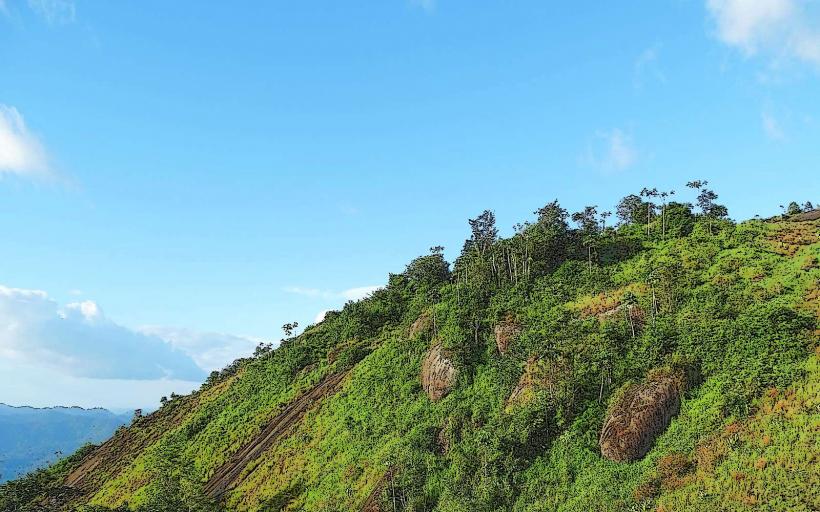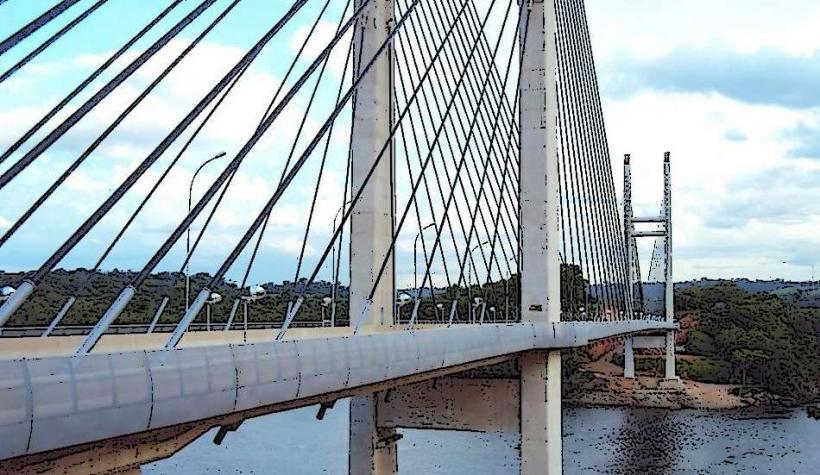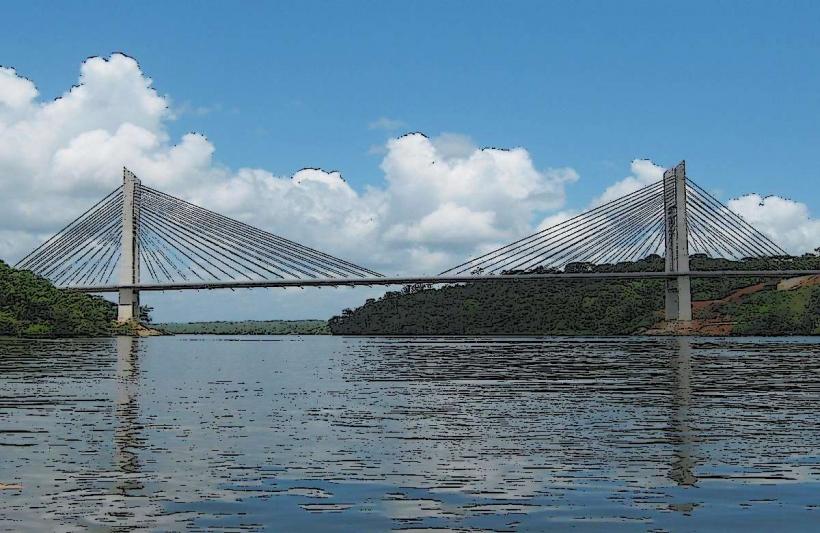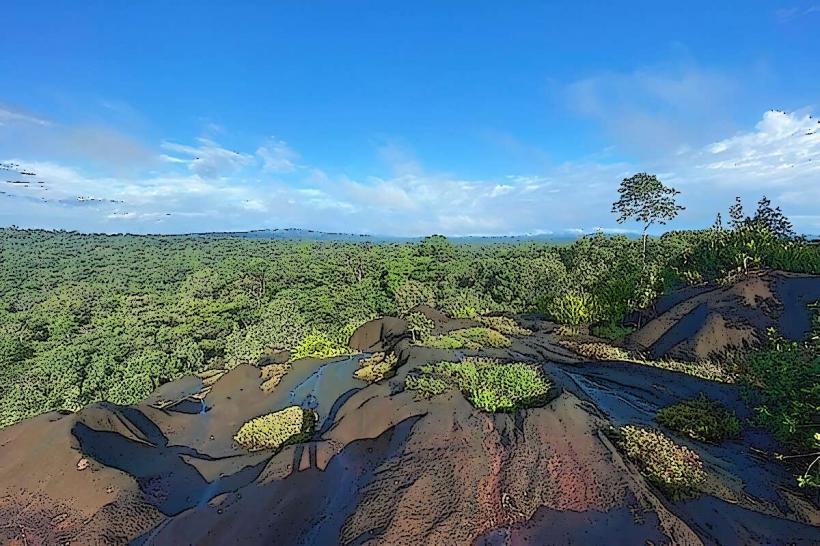Information
City: ReginaCountry: French Guiana
Continent: South America
Regina, French Guiana, South America
Overview
Régina is a small commune tucked deep inside French Guiana, in the northeastern corner of South America where rain drips steadily from the tall canopy.It sits within the Prefecture of Saint-Laurent-du-Maroni and is known for lush forests, deep historical roots, and its closeness to indigenous villages and nearby protected lands.Here’s a closer look at Régina-picture quiet streets lined with tall, swaying poplars: 1.Régina sits at about 4.0956° N, 52.3071° W, tucked in the lush expanse of French Guiana.The air stays warm and heavy with moisture, and sudden bursts of rain can drum against the tin roofs at any time of year.From December through July, rain falls almost every afternoon, marking the wet season.The skies clear in August, ushering in the dry months that run until November.In Régina, the temperature usually sits between 24°C (75°F) on cooler days and climbs to around 30°C (86°F) when the sun’s at its hottest.Régina, like much of French Guiana, traces its roots to the Indigenous peoples who fished its rivers and walked its forest trails long before Europeans arrived.The town sits near the Tumuc-Humac Mountains, where the air smells of damp earth and the land carries centuries of indigenous history.Régina also had an indirect tie to French Guiana’s penal colony system.Though it never served as a main hub for the penal system, it still fit into the larger network that linked to better-known sites like Îles du Salut and Saint-Laurent-du-Maroni.Today, Régina is a quiet commune, framed by lush green hills, and acts as a starting point for journeys into French Guiana’s wilder reaches.Its population hovers between 2,000 and 3,000 residents.The town feels far more rural than Cayenne or Saint-Laurent-du-Maroni, with dirt roads winding past wooden houses.Its people are a blend of Creole, Afro-descendant, and indigenous communities, along with smaller groups from Brazil, Suriname, and other corners of French Guiana.The Wayana and Teko peoples have lived in this region for generations.French is the official language, but in town you’ll often hear the warm, quick rhythm of Creole in the streets.The Wayana, Teko, and other local communities keep their indigenous languages alive, a vital part of the region’s identity.In Régina, most people rely on subsistence farming-rows of cassava, plantains, bananas, and other tropical fruits and vegetables growing in small, hand-tended plots.The nearby forests and rivers supply food, timber, and fresh water to the community, while Régina’s lush scenery and its closeness to the Tumuc-Humac Mountains and the Parc Amazonien de Guyane make it a promising spot for ecotourism.The town is a jumping-off point for treks into the lush rainforest and nearby conservation zones.Along the Maroni River, fishermen haul in silver-scaled catches that help sustain the local economy.For the river communities, fishing has long been a way of life, the splash of a net hitting the water as familiar as the morning sun.Régina sits close to indigenous lands, where the Wayana, Teko, and other groups have deep roots in the surrounding forests and villages.These communities carry deep cultural traditions-crafting intricate baskets, telling stories by the fire, and holding rituals rooted in the rhythms of the land and forest.You can explore indigenous culture by visiting nearby villages, sharing stories with residents, and hearing the crackle of a cooking fire.Régina also opens the door to the vast Parc Amazonien de Guyane, one of French Guiana’s largest protected areas, where ecotourism thrives.Visitors can wander through the thick, humid Amazon rainforest, trek along winding trails, and spot wildlife-jaguars slipping through the shadows, monkeys chattering overhead, and flashes of bright feathers in the trees.Though Régina lacks the grand monuments found in other French Guianese towns, it draws interest for its closeness to significant indigenous lands and its place within the region’s colonial and penal past.You can reach it by taking Route Nationale 1 (RN1) from Saint-Laurent-du-Maroni, the main road linking Régina to the rest of French Guiana.Roads in the interior are sparse, so getting to and from Régina takes more effort than traveling between the coastal cities.There’s a small airstrip on the edge of town, though flights are few and far between.Most international flights and major connections to French Guiana land at Félix Eboué International Airport in Cayenne, and from there, travelers reach Régina by road or on smaller regional planes.The Maroni River, winding along Régina’s western edge, carries boats stacked with goods and supplies.People often travel between river towns by boat, especially in the quieter stretches far from the main roads.In Régina, the food mirrors much of French Guiana’s fare, blending Creole spices with indigenous recipes and flavors brought by immigrant communities.They use local ingredients like sweet mangoes, starchy cassava, fragrant rice, and freshly caught fish.Local dishes often highlight fresh seafood and game from the nearby forests.Bouillon d’awara blends fish or meat with the tangy awara fruit and garden vegetables.Moqueca, rich with coconut milk and local produce, carries the warm, spicy touch of Brazilian influence.Papaya, mango, and pineapple brighten both savory plates and desserts.Yet beyond the kitchen, the Amazon rainforest around Régina faces mounting threats from logging, deforestation, and illegal gold mining.People are working to protect the environment, yet the problems haven’t gone away.Just outside Régina lies the vast Parc Amazonien de Guyane, a stretch of rainforest so wide you can hear parrots calling long before you see the trees.This park works to protect the Amazon’s rich biodiversity, from stealthy jaguars to gentle manatees and flashes of bright-feathered birds.As ecotourism gains momentum, locals and conservationists are finding ways to grow the economy without stripping the forest bare.That means encouraging sustainable tourism and using natural resources wisely.But Régina sits deep in the interior of French Guiana, hours from the nearest city, so it stays largely cut off from the bustle of urban life.Régina struggles with aging roads, limited healthcare, and schools that lack resources.Like many rural towns in French Guiana, it also grapples with high unemployment, persistent poverty, and a deep divide between rich and poor.Local groups and the government are working side by side, like neighbors hauling sandbags before a storm.
Landmarks in regina





